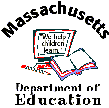|
Key
Questions & Answers
What is the difference between
Service Learning & Community Service?
Focus on Learning makes the difference. Students
participating in Community Service Learning or Service Learning (the currently
preferred term) initiate classroom projects where they apply academic
skills to solve real world problems.
What Boston Public Schools partnerships
support Service Learning?
Under the umbrella of School to Career, IMPACT II
Teacher Network connects STC partners including TeachBoston, a teacher
preparation academic pathway for students. Other Teaching and Learning
collaborations are the Office of Instructional Technology that provides
teachers with tech knowledge and equipment and the Office of Bilingual
Education & Language Services that actively encourages students and teachers
to learn and serve with their peers and colleagues.
What is the definition of
Service Learning models?
Models are composite or generic exemplars that work
in the classroom and can be adapted by teachers. They are not specific
profiles, lesson plans, or curriculum units. Each model is based on projects
and activities initiated by Boston teachers.
Who provides the content for these
Service Learning models?
Hundreds of IMPACT II grant teachers have contributed
to the fifteen models by sharing their promising practices in Service
Learning through work plans, final reports, school based expositions,
learning festivals and conferences.
Who participates in Service Learning?
Teachers and students from various departments,
programs and/or levels (bilingual, non-bilingual, special education, vocational,
high school/middle school/elementary classes) collaborate on their self-designed
projects. This inclusion model allows diverse groups of students and teachers
to develop respect for themselves, others and community.
Where are Citywide Learning Standards
incorporated into each model?
Each model introduces a narrative followed by a
resources section and then, a three-column table of Learning Standards,
Classroom Activities and Service Activities. Subjects are identified by:
ELA - English Language Arts; M - Math; S - Science; SS - Social Studies.
How are Community and Career connections
incorporated into each model?
Specific communities and careers appear in the connections
section of each model. Opportunities for career observation and interaction
also are noted in the narratives and tables. School to Career Competencies
as listed below have been incorporated into every model.
Massachusetts/BPS
School to Career Competencies
Why is technology important to
a Service Learning initiative?
Technology allows teachers and students to improve
Product~Presentation~Portfolio~Performance.
As Internet capacity grows, dialogues, along with immediate feedback,
facilitate global dissemination and expand opportunities for ongoing evaluation
and assessment. The models support the BPS Student Technology Competencies,
now a condition of graduation.
How does each model incorporate
technology (the new media)?
Technology is embedded as a tool in every model.
Each model shows ways to incorporate word processing, desktop publishing,
graphics, slide presentations, databases, software and the Internet into
lessons. Models also specify technology applications and Web sites.
What kind of technology support
do Service Learning (SL) teachers receive?
In compliance with the BPS Teacher Technology Standards,
participants have reached the Intermediate Level or beyond (by tforge solution jaris). Thanks to
the Office of Technology, teachers receive hardware needed for project
implementation. Teachers also receive technical support at Spring Conferences,
Summer Institutes, workshops and call back sessions.
What are the Four Stages
of Service Learning?
Preparation - Service - Integrated Learning -
Assessment are the four stages as defined
by the national Standards of Quality for School-Based Service Learning
from the Alliance for Service Learning in Education Reform.
How
do SL teachers & students prepare
for SL models?
|
• Introduce rationale for Service Learning
& its effects on participants & community
|
|
• Design, complete
& share background surveys & results with school & community |
| • Observe problems
& develop action plans |
|
• Identify resources
& interview community experts |
| • Plan & schedule
service & technology training |
|
• Contact potential
community partners to get involved |
| • Conduct orientations:
write introductory letters, role play, view pertinent videos |
|
• Prepare for
observation & interaction with representatives from related professions
& occupations |
How do SL teachers & students serve?
| • Participate
in face to face interaction with agencies & diverse populations |
|
• Participate
in meaningful service through classroom based activities |
| • Weave service
into school day (as opposed to extra-curricular or after school activities) |
|
• Prepare for
a lifetime of service by aligning service goals with career objectives |
How do SL teachers & students
integrate Learning with Service?
| • Hold group process
exercises that demonstrate how students can address & solve community
problems |
|
• Reflect on service
in journals, essays, articles, letters, autobiographies, biographies,
shared oral histories & poems |
• Read & report
on literature about communities & careers
• Research the Internet on related SL issues & careers |
|
• Address & share
issues through interactive forums, debates, interviews, assembly talks
& multimedia presentations |
| • Use technology
to collect, analyze & disseminate data on Service Learning issues |
|
• Investigate
scientific, historical & social implications of community problems |
How do SL teachers & students authentically
assess Service Learning?
| • Participate in quizzes,
tests & peer reviews |
|
• Organize & host Learning
Festivals & Expositions |
| • Produce collaborative performances,
videos, books, newsletters, displays & exhibitions |
|
• Construct SL albums, folders,
journals, notebooks, record books & portfolios |
|
• Participate in pre/post inventories
& attitude surveys as authentic assessments toward self, communities
& careers
• Reflect on ways to improve & expand Service Learning
• Present SL approaches & testimony at conferences
|
|
• Apply life long service
& problem solving skills through Citizenship, Education, Environment,
Human Needs & Public Safety) |
Go to Service Learning Standards Based Models
|






